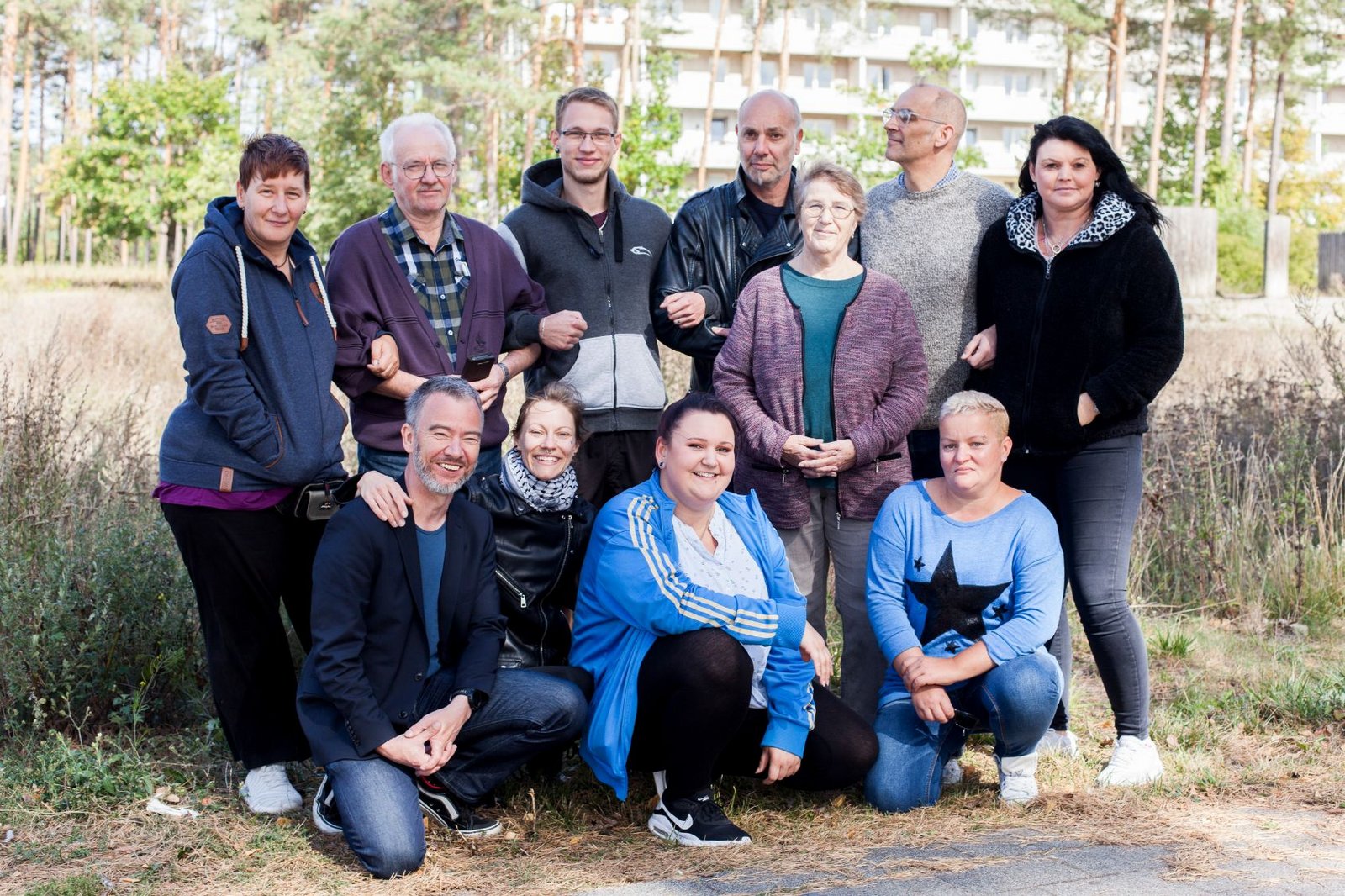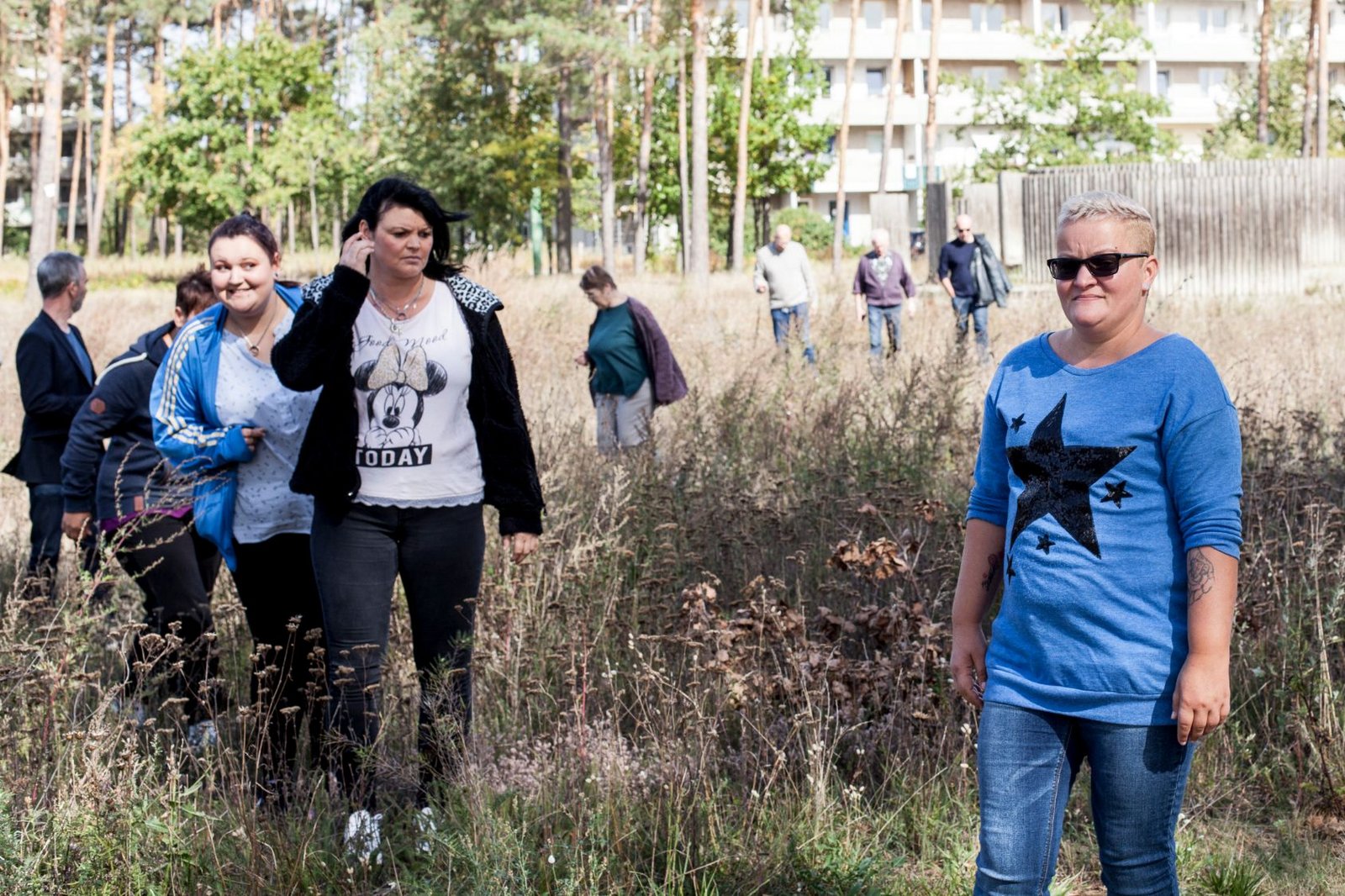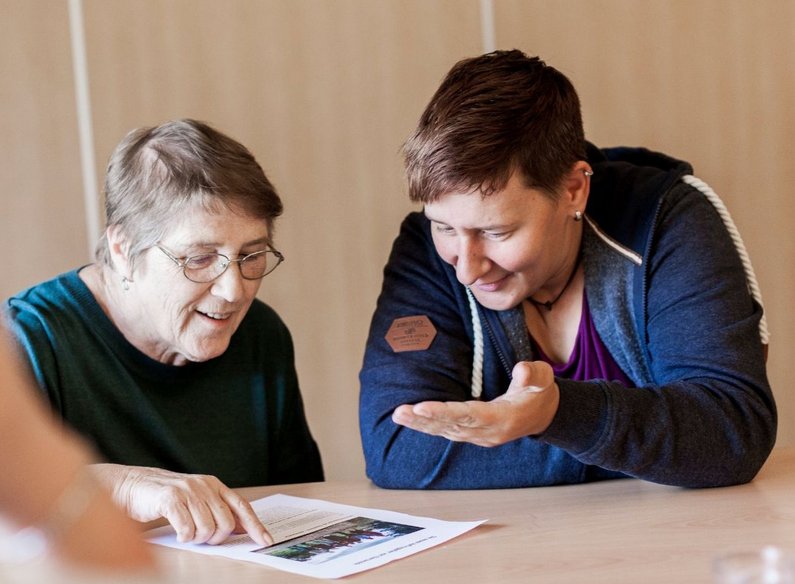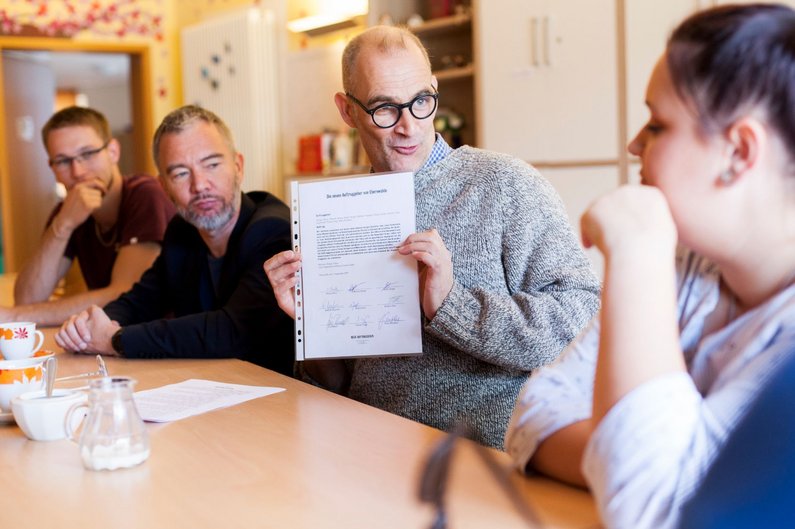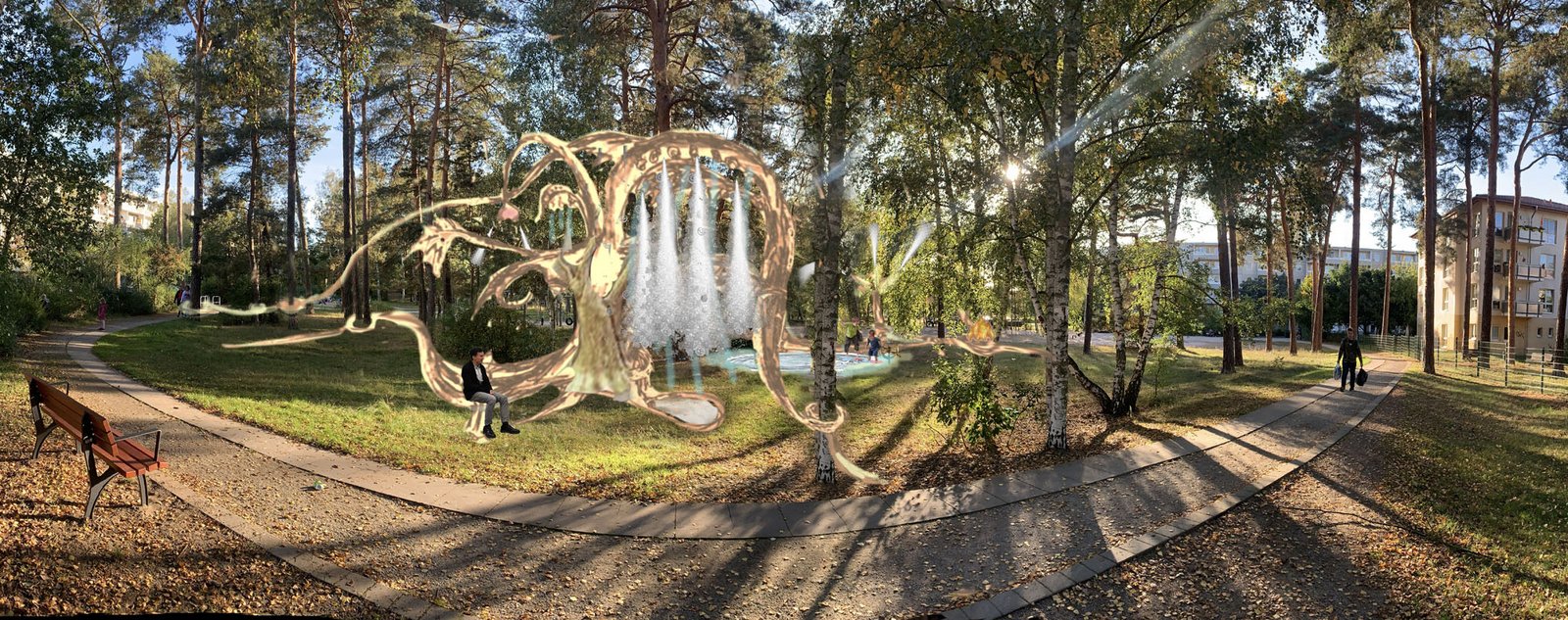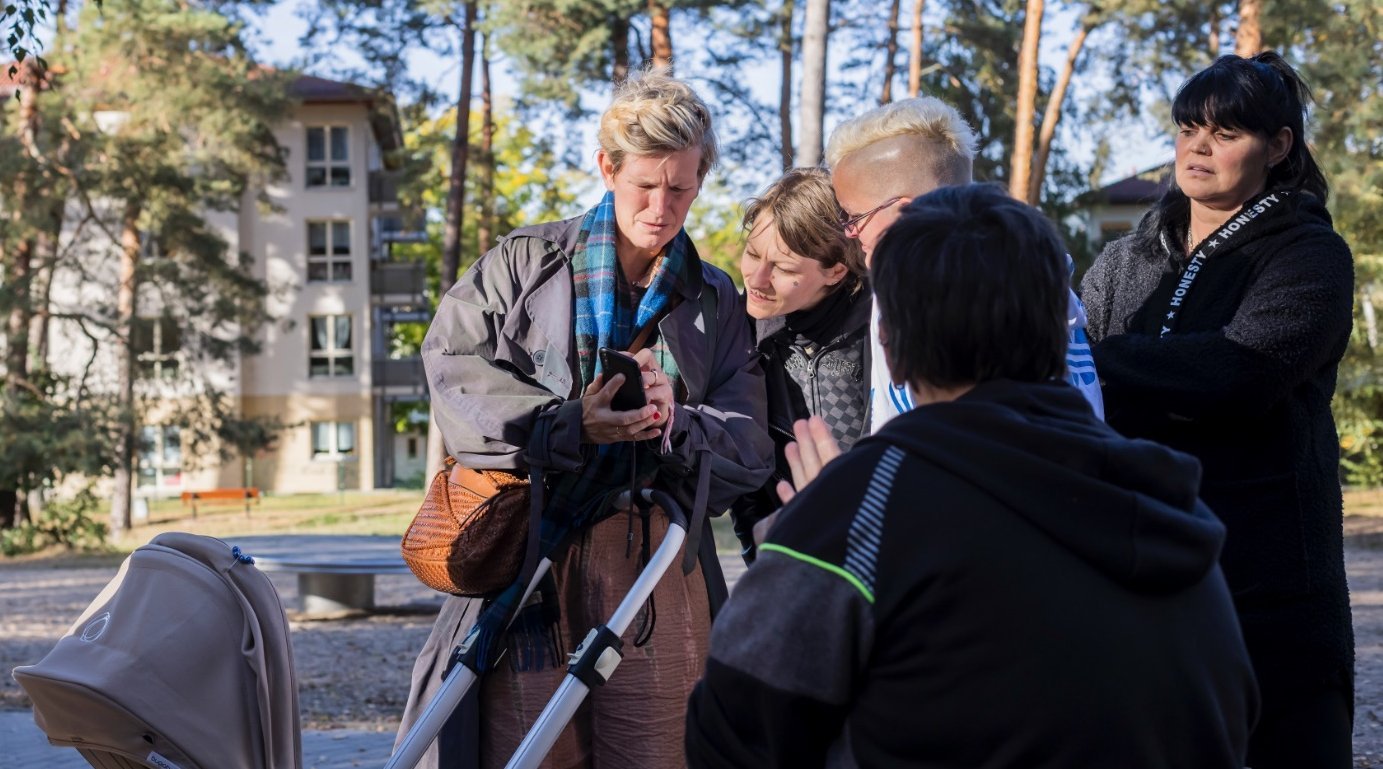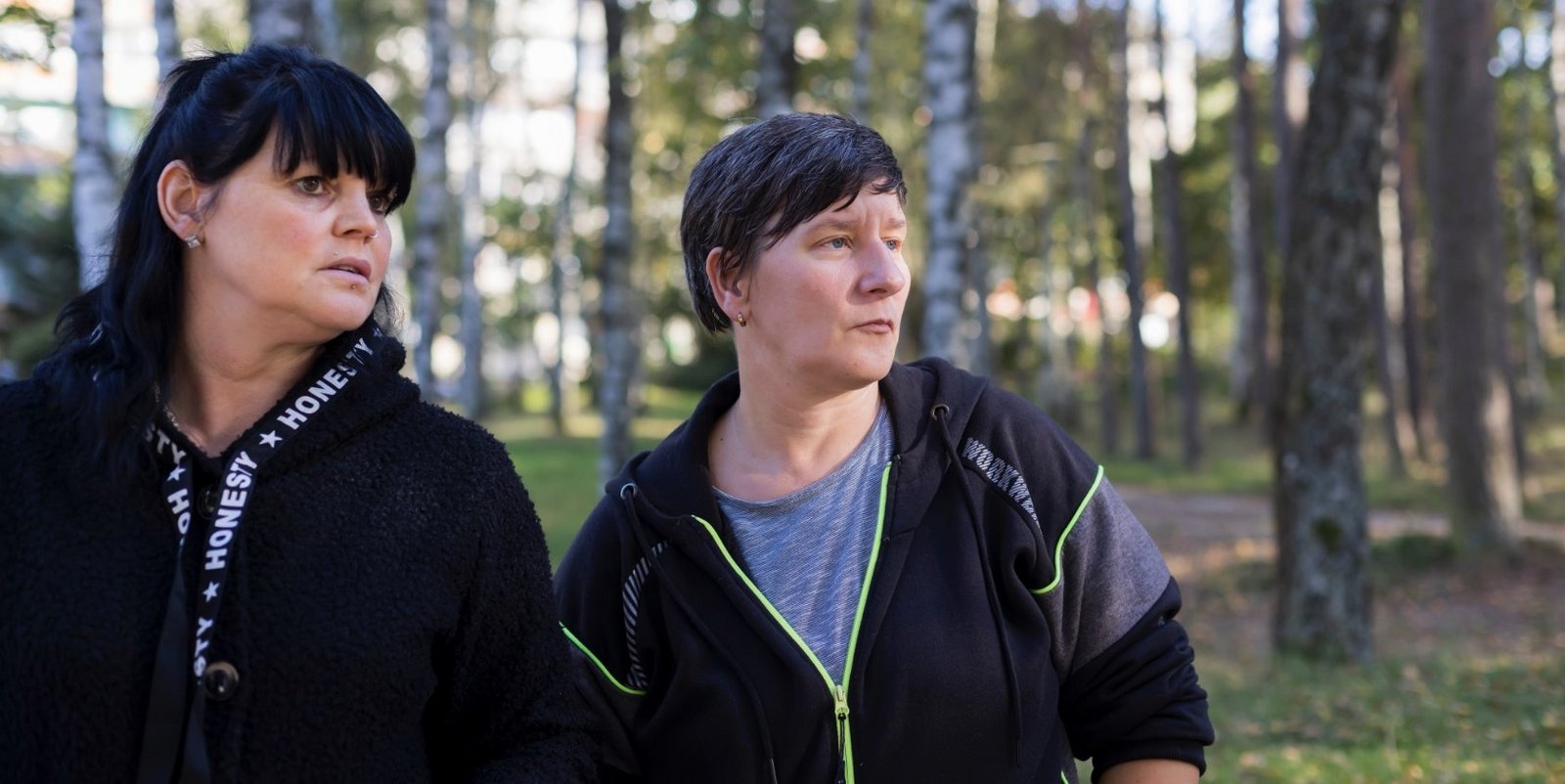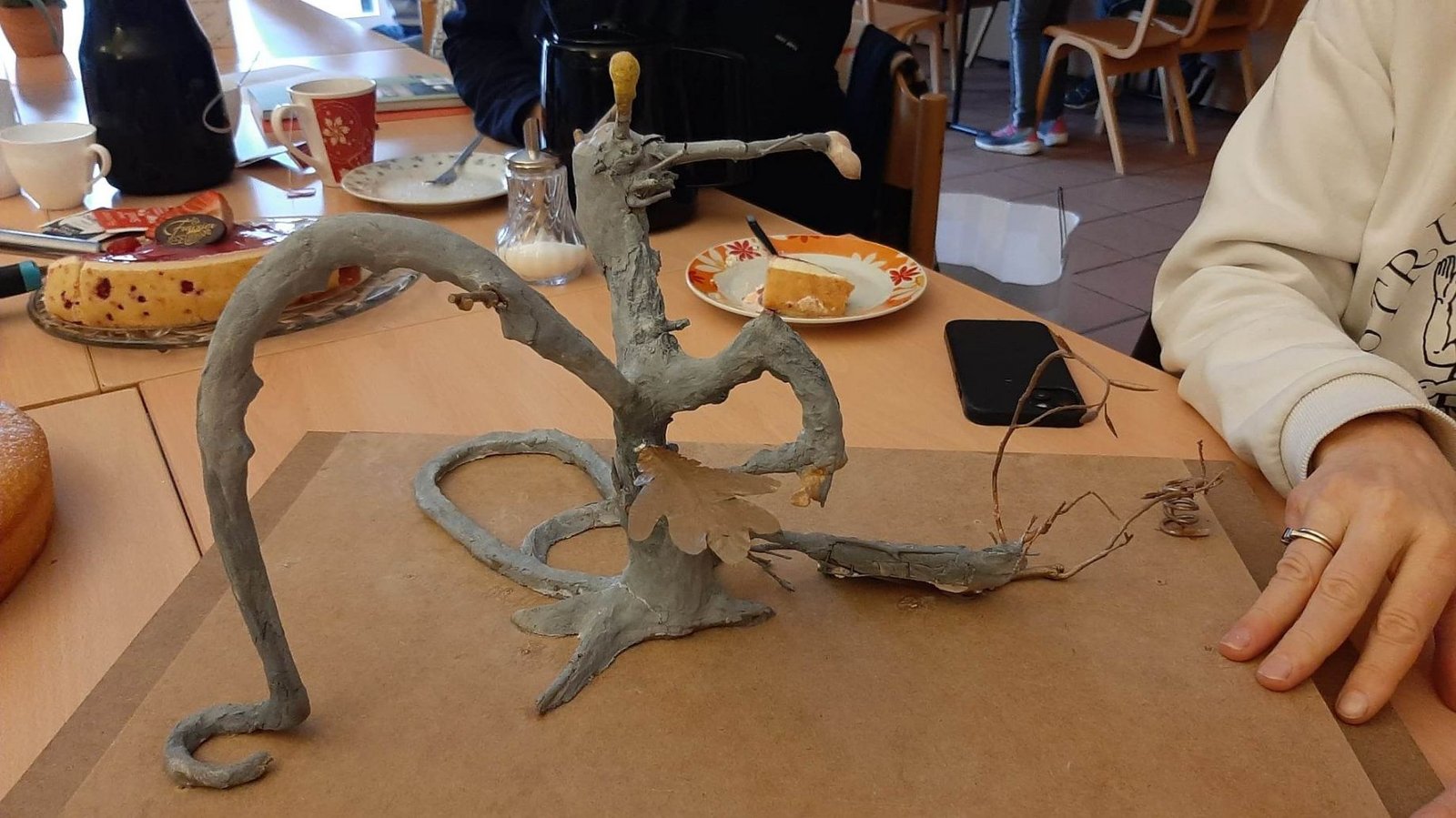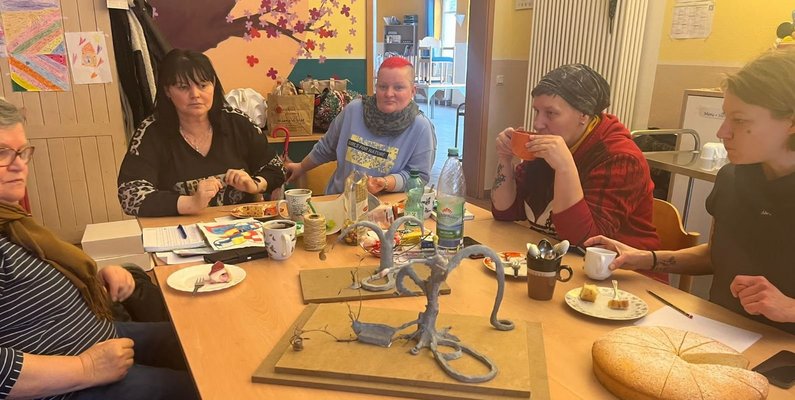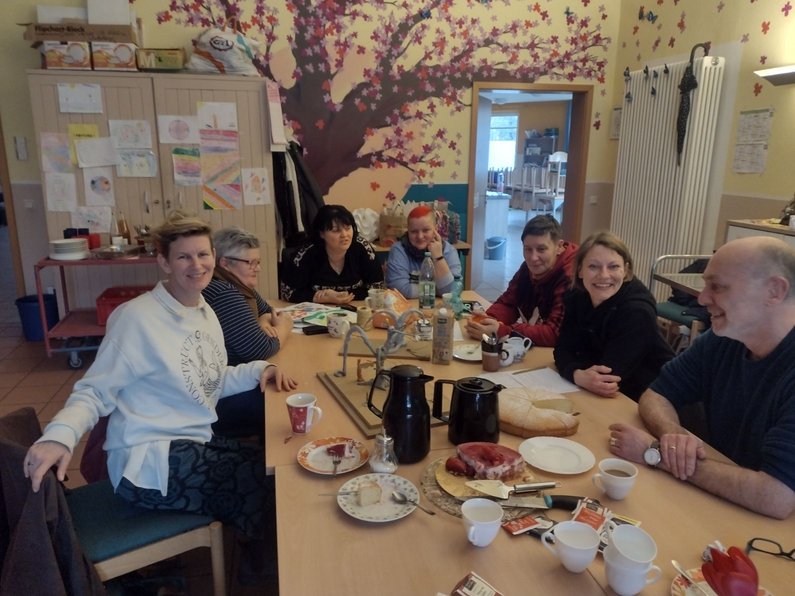Patrons: Residents of the Brandenburgisches Viertel, Eberswalde: Margot Bartz, Manuela Berger, Saskia Berger, Stefanie Bugdahn, Dennis Jaekel, Kathrin Otto, Jörg Renell, Werner Voigt, Tabea Westphal
Mediator: Holger Friese
Artist: Laure Prouvost
Duration: 2019 ongoing
Partner: Kulturstiftung des Bundes (German Federal Cultural Foundation), Fondation de France
Citizens who want to change the attitude towards life in a large prefabricated housing area are struggling with many clichés. The New Patrons of Eberswalde are not discouraged by this fact and want to create an unmissable attraction in the middle of such a quarter. In the center of the large housing estate shrinkage and dismantling have left gaps. Here, a new social meeting point is to emerge, bringing people together in a central location and thereby connecting the different generations.
Where some regard the area as a problem district, and others complain about isolation, the New Patrons want to reverse the situation through an artistic impulse. A place of shared security and comfort is to be created in order to set an unmistakable sign for the future of the Brandenburgisches Viertel quarter.
In conversation with mediator Holger Friese, the commissioning group developed the idea of creating a water playground between the residantial blocks that would initiate the dialogue that is currently lacking. At the same time, as an active, playful and transparently designed square, it should also attract other residents of the city and positively enhance the neighborhood – like a constant spring against the desert feeling of the periphery, sprung from a work of art that will also mean something to those who have so far looked past the neighborhood. The experts consulted were amazed at how well the intuitively formulated square profile of the commissioning group also matched the professional onclusions of planners and architects.
French artist Laure Prouvost accepted the commission and designed a surreal dream for the Brandenburg Quarter under the working title We Will Shine. In it, a shiny, vine-like fabulous plant with interactive elements is placed like sparkling jewelry in the middle of a pine clearing in the neighborhood. The metallic surface references the history of copper in the region. In the design, branches and roots become pipes in which water finds its way out of the plant in various ways. In addition to water features, the vine also offers climbing and seating opportunities as well as protective canopies, a sandbox enclosed by roots, and light and sound elements.
In her expansive installations, the artist humorously combines such diverse media as found objects, architecture, video, sound, and performance. She often brings together personal memories with artistic and literary references and, accompanied by word and language games, blurs the boundaries between fiction and reality. In 2013, she won the prestigious Turner Prize. In 2019, she represented France at the Venice Biennale, transforming the national pavilion into a surreal, fluid universe with her multimedia work Deep See Blue Surrounding You. She has exhibited internationally at renowned institutions including Tate Britain and the Whitechapel Gallery in London, Portikus in Frankfurt, the Neue Berliner Kunstverein, and the New Museum in New York.
The Brandenburgisches Viertel in Eberswalde, planned at the end of the 1970s as a comfortable living place for workers in the meat-processing industry, had changed considerably since the transformations of 1989. Eberswalde lost a quarter of its inhabitants at that time. The previously coveted quarter changed due to dismantling and decrease of inhabitants and is still characterized by extensive brownfields today. Attractive community places are rare despite committed district work.
Laure Prouvost's draft is about two things: celebrating the self-confidence of the people in the neighborhood and creating a symbol of nurturing care. In doing so, she responds directly to the commitment of the commissioning group.
The water playground is an open meeting place for the youngest and the elderly, creating a new togetherness instead of demarcation and providing residents with a place where they can find themselves.
